Content
All issues / Volume 18 (2024) / Issue 10 (October)
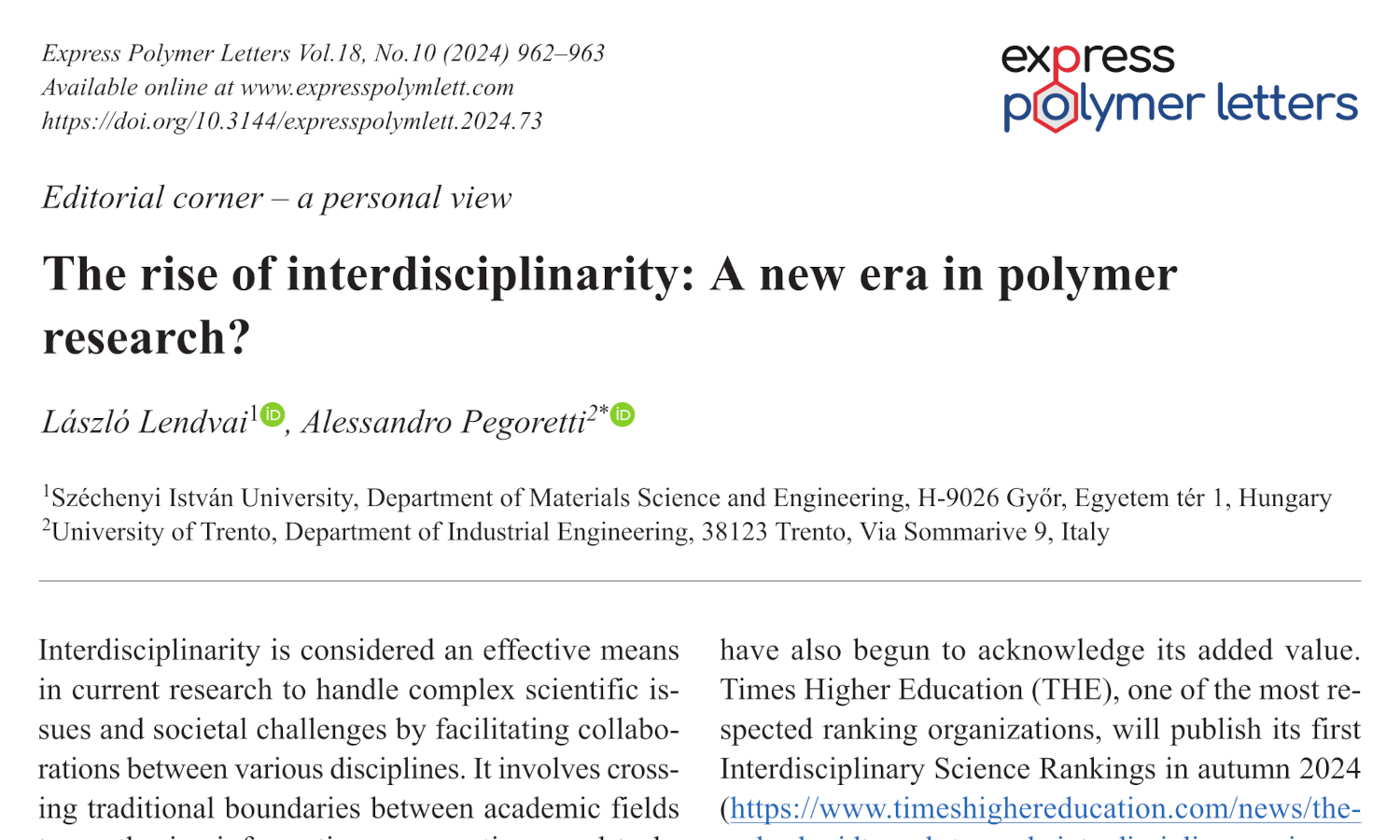
This is an editorial article. It has no abstract.
Comparative analysis of thermal degradation effects on traditional and low-emission flexible polyurethane foams
Enikő Hornyák-Mester, Miklós Varga, Lilla Márta Sőrés-Tölli, Dóra Mentes, Alpár F. Hatvani-Nagy, Peter Werner Groh, Béla Viskolcz, Gábor Muránszky, Béla Fiser
Vol. 18., No.10., Pages 964-975, 2024
DOI: 10.3144/expresspolymlett.2024.74
Vol. 18., No.10., Pages 964-975, 2024
DOI: 10.3144/expresspolymlett.2024.74

The degradation of different flexible polyurethane foams for molded application after thermal aging were compared. A reference sample using traditional higher emission additives and four samples of different composition using low-emission additives were compared. For the modified samples volatile organic compound (VOC) and semi-volatile organic compound (FOG/SVOC) contents fell well below the benchmarking limits, which indicates that the selected low-emission additives are incorporated into the polymer chain. To examine different material properties and for evaluating changes due to increased temperature exposure for a prolonged period of time mechanical and acoustic tests were carried out before and after dry heat aging. It was found that two low emission samples exhibited superior sound absorption compared to the reference sample along with less significant change after aging in the acoustic properties. The compressive strength was lower than the reference as a result of lower product densities. However, the change in compressive strength after aging was less than 15% (with one exception), which is acceptable according to the standard requirements. Thermogravimetric analysis was also performed and revealed that no significant difference can be observed between the examined samples due to heat degradation, indicating that the modifications made to reduce VOC content did not adversely affect the foam’s resistance to thermal degradation.
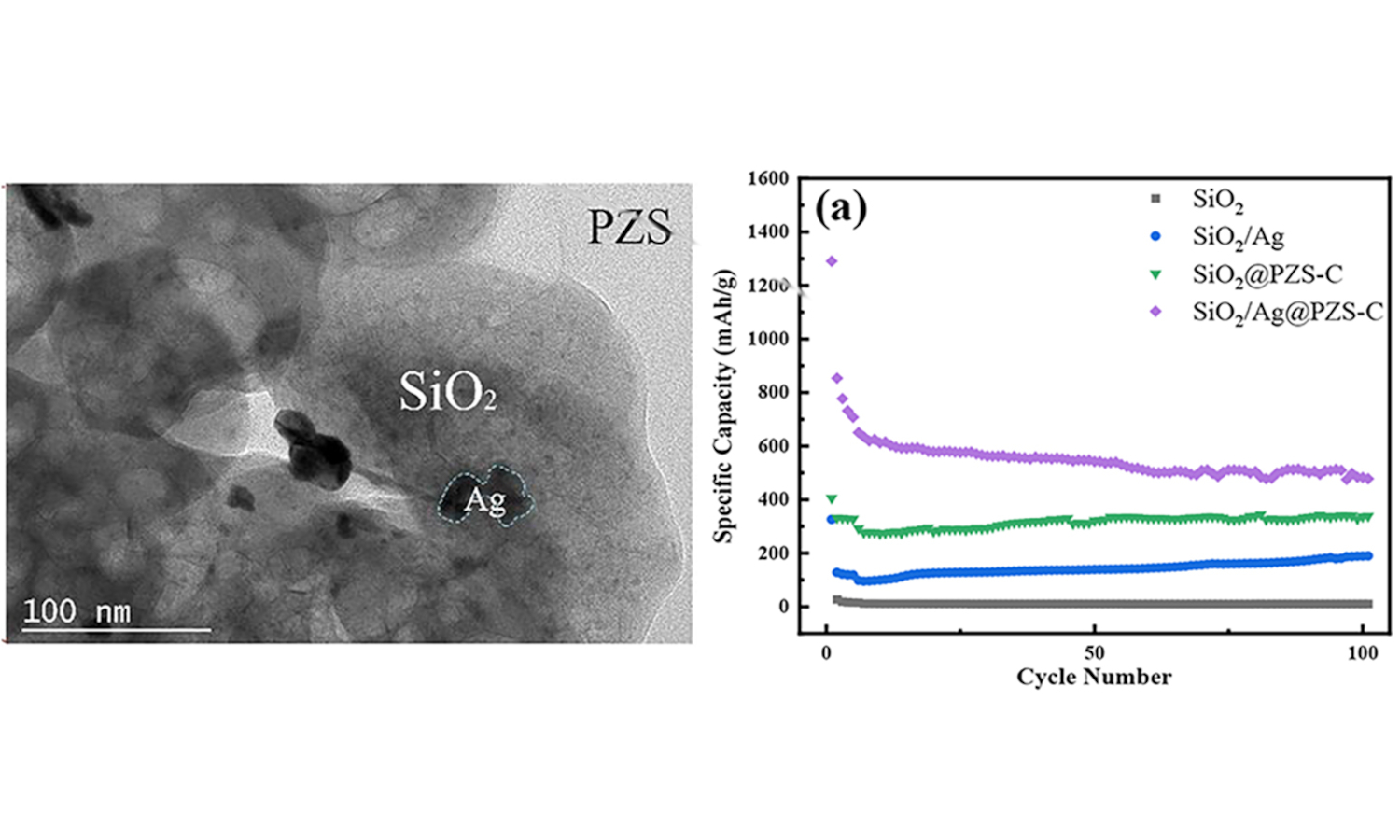
Lithium-ion batteries (LIBs) are widely used as important energy storage and energy supply devices. The porous design and heteroatomization modification of carbon-based anode materials are crucial for achieving high-capacity and reversible energy storage in LIBs. Sol-gel method and pyrolysis treatment were used to obtain silica/silver composite particles used as templates. Polyphosphazene-coated silica/silver composite composite carbon materials (SiO2/Ag@PZS-C) were synthesized through in-situ self-assembly and carbonization of polyphosphazene. The electrochemical behavior and lithium storage mechanism of SiO2/Ag@PZS-C was also studied. The results reveal that the composite exhibited high specific capacity, stable cycling and superior rate performance. The double modification of silver nanoparticles and polyphosphazene carbon significantly improves the conductivity of silica and reduces the volume change. Moreover, the carbon shell of polyphosphazene facilitated the formation of a stable solid electrolyte interface film (SEI), preventing direct contact between the active material and the electrolyte, thereby substantially enhancing lithium storage performance.
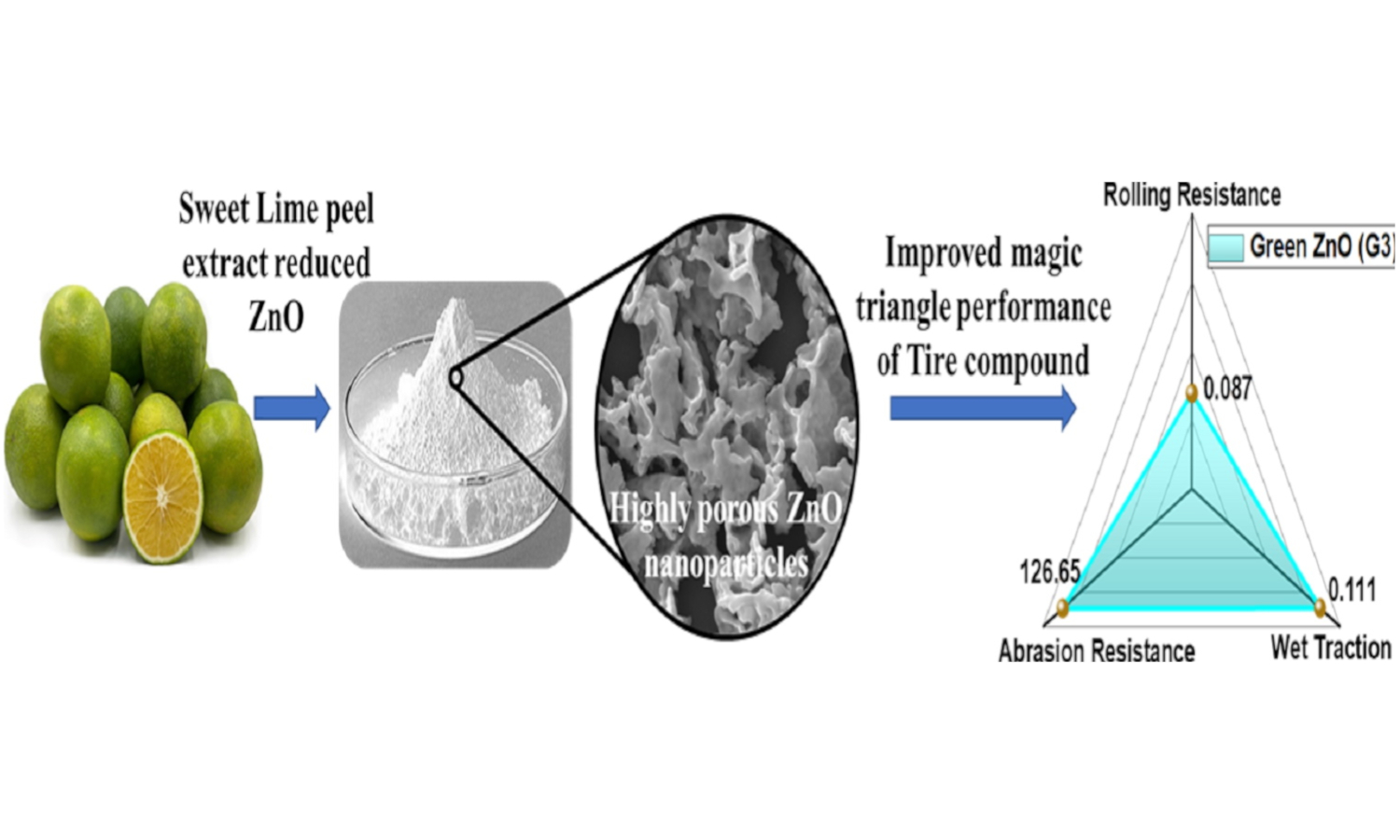
This study addresses the increasing demand for eco-friendly rubber compounding additives by exploring greensynthesized zinc oxide (ZnO) nanoparticles. The green synthesis of ZnO nanoparticles is gaining attention due to its ecofriendly approach and potential applications. This study investigates the synthesis of ZnO nanoparticles using sweet lime peel extract as a green method, comparing it with chemical synthesis. The obtained nanoparticles are characterized and evaluated for suitability as activators in natural rubber composites for tire applications. Furthermore, the cytotoxicity of the prepared ZnO nanoparticles on mice cells is assessed, revealing lower toxicity for green-synthesized ZnO compared to chemically synthesized ZnO. Payne effect analysis on the composites demonstrates improved polymer-filler interaction and mechanical properties for the green-synthesized ZnO-loaded composites. Notably, the incorporation of green-synthesized ZnO leads to significant enhancements in tensile strength due to its higher surface area. It achieves desirable magic triangle tire properties, including low rolling resistance, high wet traction, and high abrasion resistance. These findings highlight the promising potential of green ZnO as an environmentally friendly alternative to chemical ZnO in rubber compounding.
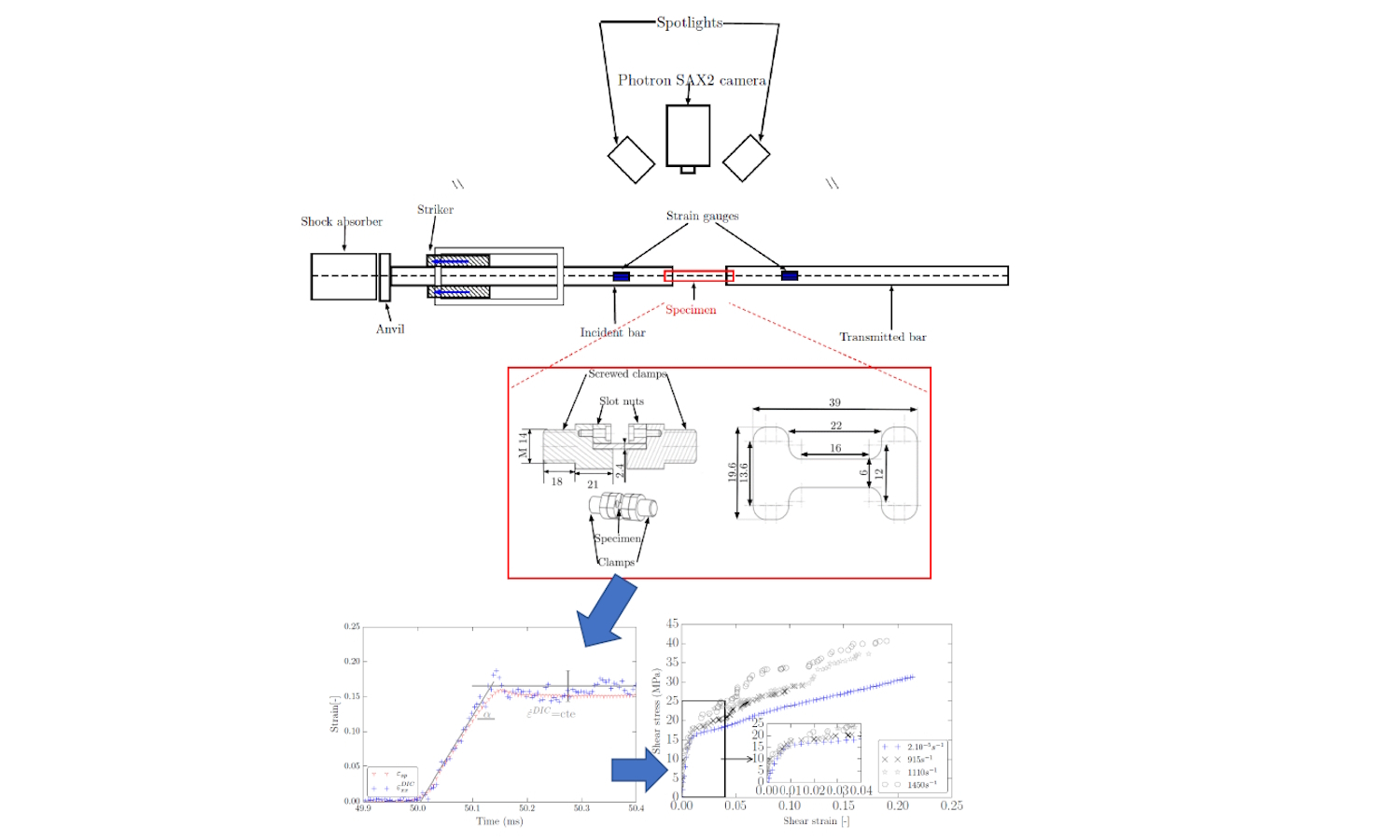
Nowadays, ultra high molecular weight polyethylene (UHMWPE), allows the combination of lightweight, high strength and is praised for the design of severely loaded structures. It has become a good option for lightweight armour solutions. It is therefore important to characterise its mechanical behaviour. Up to now, strain rate effects on mechanical behaviour have been poorly explored. In this work, this issue is tackled by studying the strain rate influence on the in-plane deformation, in shear and tension of the Tensylon® HSBD30A, a UHMWPE dedicated to ballistic and blast protection. Two laminates of Tensylon® of respective orientation [0 °/90°]20 and [±45°]20 were subjected to static and split Hopkinson tensile bar (SHTB) tests. A new mounting system was designed, and new specimen shapes were used to match the experimental setup configurations. Digital image correlation (DIC) was used to measure the in-plane strain. A significant strain-rate dependence on the material behaviour.is evidenced. Besides, results exhibit a higher strength for the [0°/90°]20 specimen than for the [±45°]20 one. Despite some limitations, the proposed setup and measurement methods allowed visualisation of strain rate effects on the stress-strain relationship for strain rates ranging from the quasi-static regime to the dynamic one (1500 s–1).
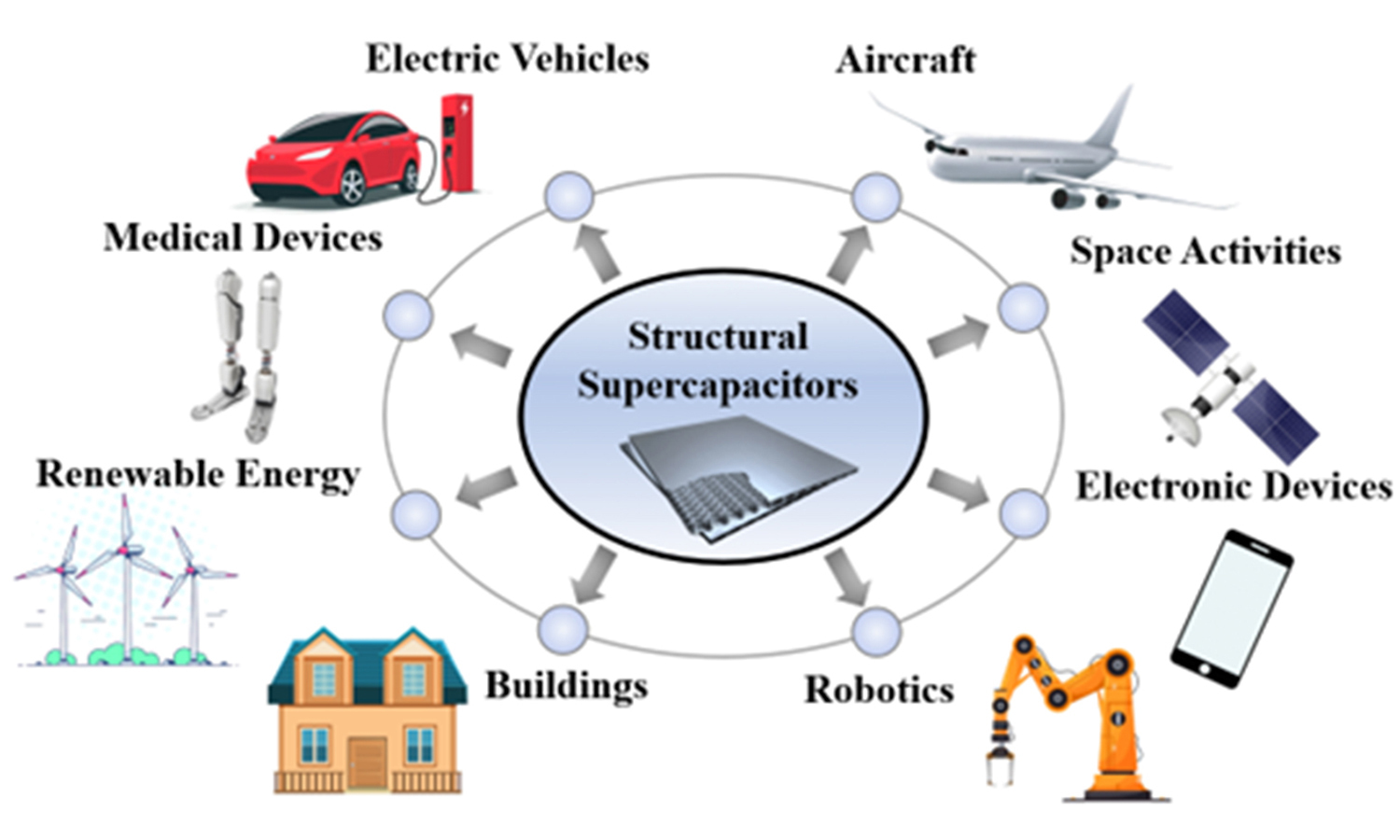
The article gives an overview of energy storage composites, their materials, manufacturing processes, and applications. Carbon- and metal-based nanoparticles and their relevant properties are presented. We focus on multifunctional structural supercapacitors and their components. Thus, we describe the main structural electrolytes and elements of the structural electrodes. We show that the nanoparticles significantly influence the electrochemical properties of the electrode. For example, carbon-based nanoparticles can achieve low energy density but high power density, while the opposite is true for metal-based nanoparticles. We show that when carbon- and metal-based nanoparticles are used together, a positive synergy is created between them, promoting the development of favorable electrochemical properties in the electrodes. Furthermore, we present structural supercapacitors and possible ways to introduce nanoparticles into the system. Finally, we present a summary of the progress achieved so far and the advancements expected in the future, as well as potential areas where structural supercapacitors could be used.
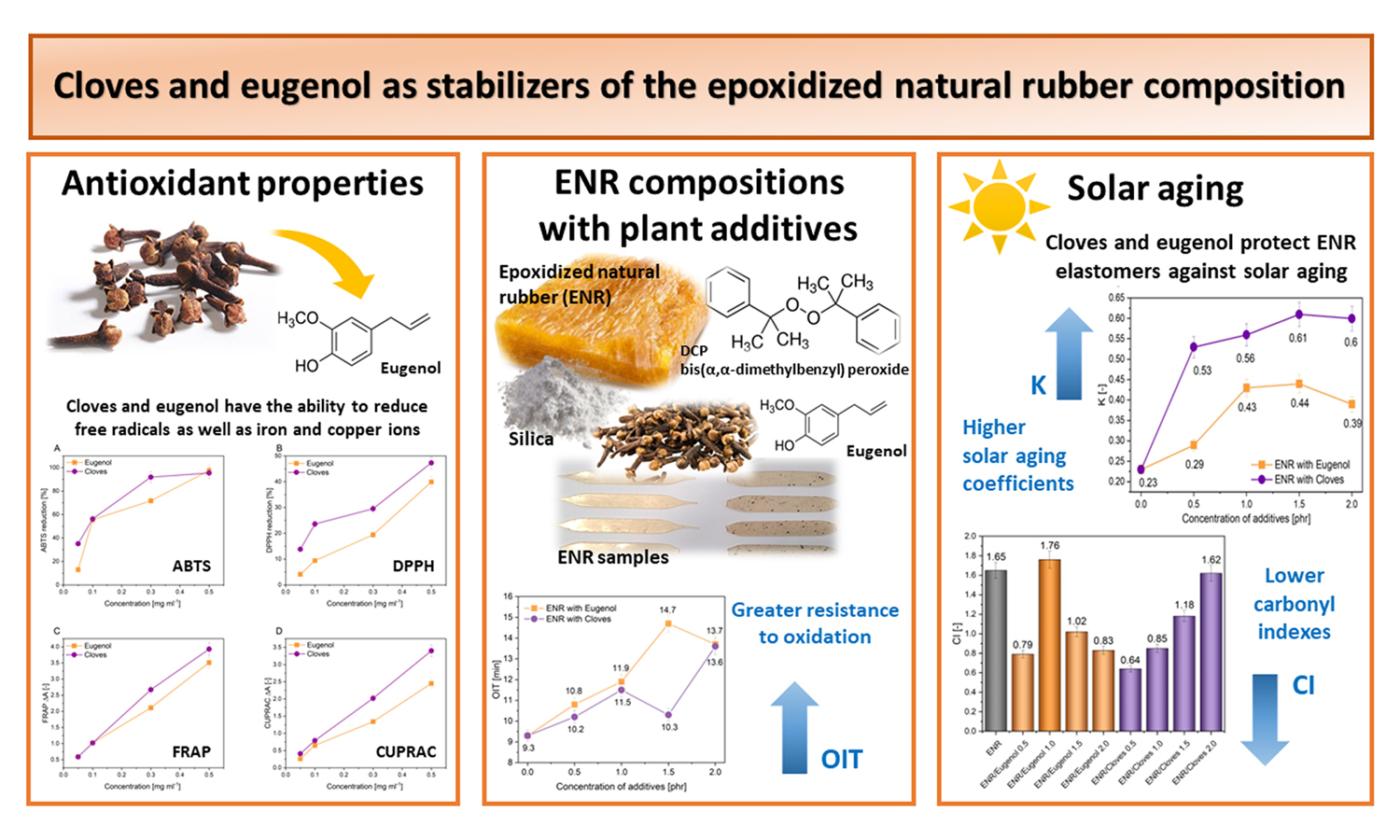
In polymer materials technology, replacing synthetic stabilizers with natural antioxidants is a current and developing issue. Cloves have antimicrobial and antioxidant properties, which is why they are often used in medicine and in gastronomy. Eugenol – the main component of clove oil, is also a strong antioxidant. The aim of the study was to analyze and compare the anti-aging effects of eugenol and cloves in epoxidized natural rubber (ENR) compositions. The 2,2′-azinobis- (3-ethylbenzothiazoline-6-sulfonate (ABTS), 2,2-diphenyl-1-picrylhydrazyl (DPPH), ferric reducing antioxidant power (FRAP) and CUPric reducing antioxidant capacity (CUPRAC) tests showed the ability of plant materials to reduce free radicals, as well as iron and copper ions. ENR compositions with additives were characterized by a longer oxidation induction time (OIT). The samples after solar aging showed better resistance to elevated temperature and solar radiation, as evidenced by aging coefficients (K) calculated on the basis of mechanical properties and carbonyl indexes of samples with eugenol and cloves. Cloves and eugenol can be successfully used as natural stabilizers in elastomeric materials.
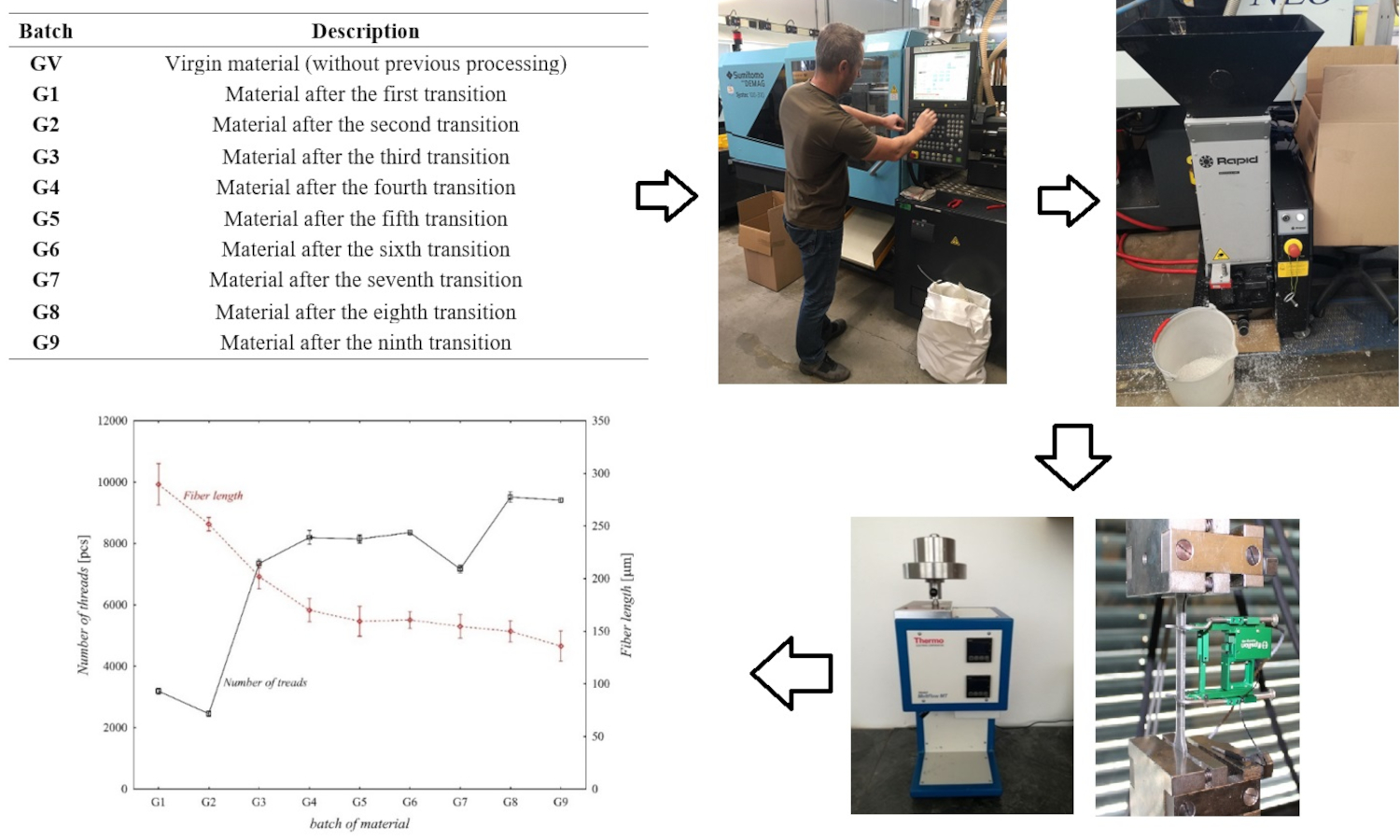
The paper deals with the influence of the brittleness of glass fibers on the selected performance properties of the fibrous polymer composite. Understanding the fatigue behavior of fiber-reinforced plastics is desirable for exploiting their features in safe, durable, and reliable industrial components. Based on the proposed methodology, it is possible to assess the impact of material reuse on selected mechanical and rheological properties. To verify the methodology by experimental analysis, homopolymer PP reinforced with chemically grafted glass fiber (30 wt%) was selected. The proposed methodology was subsequently verified by experimental analysis and evaluated statistically. The morphology of the fracture surfaces was evaluated, and the fiber-polymer matrix adhesion was monitored at the interface of the fracture surfaces. Based on the measured and evaluated values and fracture surfaces, we can say that the brittleness of the fibers significantly affects the performance properties of the tested polymer composite.


